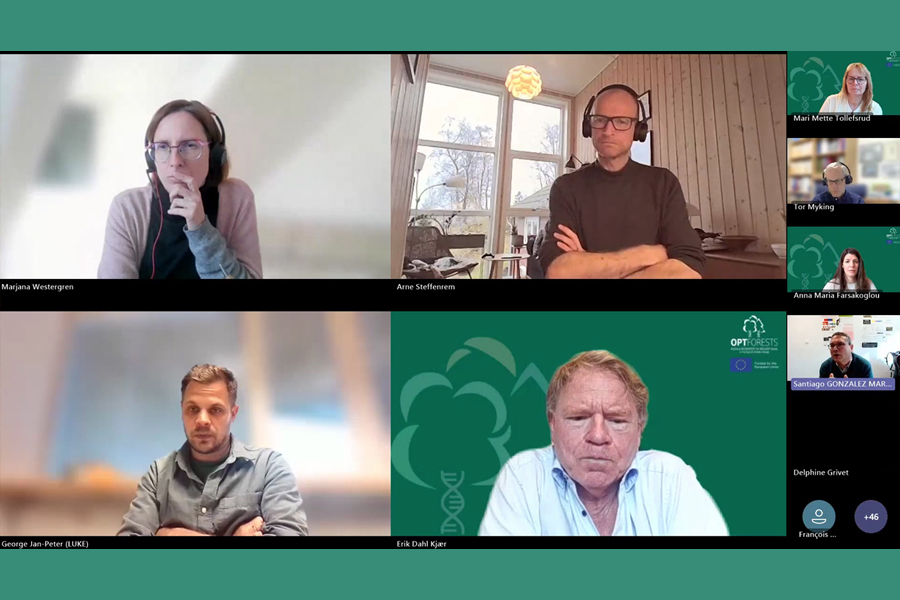How can we tell when a forest’s genetic diversity is in decline, and what can be done to prevent it? These questions guided the recent EUFORGEN–OptFORESTS webinar series, held online on 6–7 November 2025, which attracted more than 70 participants each day from across Europe.
Jointly organised by EUFORGEN and the Horizon Europe project OptFORESTS, the two-day event explored how the loss of genetic diversity can be detected and what this means for sustainable forest management and conservation. The sessions were facilitated by Mari-Mette Tollefsrud (NIBIO and member of the OptFORESTS WP4 team) and moderated by Anna-Maria Farsakoglou (European Forest Institute, WP8 leader).
From theory to practice
The first session examined how genetic decline can be identified in natural populations, combining theory with practical examples. Alicia Mastretta-Yanes (Royal Botanic Gardens, Kew) presented the development of new genetic indicators for biodiversity monitoring, while Geir Bolstad (Norwegian Institute for Nature Research) shared insights from tracking genetic introgression in wild Atlantic salmon. Ophélie Ronce (Institute of Evolutionary Science of Montpellier) discussed assisted gene flow as a management tool, highlighting the risks of poorly timed or excessive interventions.
A lively discussion chaired by François Lefèvre (INRAE, OptFORESTS WP4 leader) underlined that determining when to intervene depends not only on scientific data but also on societal values and management priorities.
Forests in focus
The second session turned to forest management and breeding. Marjana Westergren (Slovenian Forestry Institute, OptFORESTS WP3 leader) presented research on beech, pine and ash, showing that while natural selection acts on key traits such as growth and drought tolerance, evolutionary change in trees is gradual. Arne Steffenrem (Norwegian Institute of Bioeconomy Research) shared Norway’s approach to climate-smart breeding, and Jan-Peter George (Natural Resources Institute Finland) showcased how ex situ conservation and cryo-storage complement in situ efforts.
Closing the event, Erik Dahl Kjær (University of Copenhagen, OptFORESTS WP5 leader) stressed that detecting genetic decline requires collaboration between researchers, managers and policymakers.
Over two days of lively discussion, participants shared a common message: forest resilience starts with genetic diversity. Detecting and addressing genetic decline is vital to secure the future of Europe’s forests.
Watch all the EUFORGEN–OptFORESTS webinar recordings from 2025 here!
